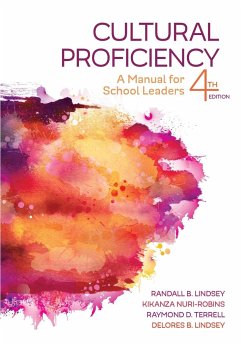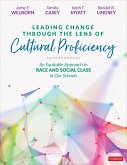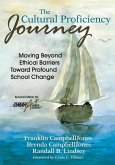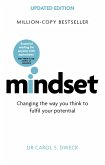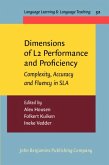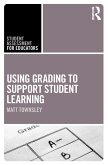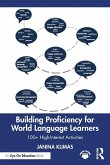Randall B. Lindsey, Kikanza Nuri-Robins, Raymond D. Terrell
Cultural Proficiency
A Manual for School Leaders
Randall B. Lindsey, Kikanza Nuri-Robins, Raymond D. Terrell
Cultural Proficiency
A Manual for School Leaders
- Broschiertes Buch
- Merkliste
- Auf die Merkliste
- Bewerten Bewerten
- Teilen
- Produkt teilen
- Produkterinnerung
- Produkterinnerung
Cultural Proficiency helps establish a mindset and worldview for effectively describing and responding to inequities. Its inside-outside approach to leadership is grounded in the assumption that honest introspection is a requirement to leading equity-driven change.
Andere Kunden interessierten sich auch für
![Leading Change Through the Lens of Cultural Proficiency Leading Change Through the Lens of Cultural Proficiency]() Jaime E. WelbornLeading Change Through the Lens of Cultural Proficiency46,99 €
Jaime E. WelbornLeading Change Through the Lens of Cultural Proficiency46,99 €![The Cultural Proficiency Journey; Moving Beyond Ethical Barriers Toward Profound School Change The Cultural Proficiency Journey; Moving Beyond Ethical Barriers Toward Profound School Change]() Franklin CampbelljonesThe Cultural Proficiency Journey; Moving Beyond Ethical Barriers Toward Profound School Change31,99 €
Franklin CampbelljonesThe Cultural Proficiency Journey; Moving Beyond Ethical Barriers Toward Profound School Change31,99 €![Mindset Mindset]() Dr Carol DweckMindset11,99 €
Dr Carol DweckMindset11,99 €![Dimensions of L2 Performance and Proficiency Dimensions of L2 Performance and Proficiency]() Dimensions of L2 Performance and Proficiency42,99 €
Dimensions of L2 Performance and Proficiency42,99 €![Using Grading to Support Student Learning Using Grading to Support Student Learning]() Matt TownsleyUsing Grading to Support Student Learning33,99 €
Matt TownsleyUsing Grading to Support Student Learning33,99 €![Building Proficiency for World Language Learners Building Proficiency for World Language Learners]() Janina KlimasBuilding Proficiency for World Language Learners32,99 €
Janina KlimasBuilding Proficiency for World Language Learners32,99 €![Bilingualism in Education Bilingualism in Education]() Jim CumminsBilingualism in Education61,99 €
Jim CumminsBilingualism in Education61,99 €-
-
-
Cultural Proficiency helps establish a mindset and worldview for effectively describing and responding to inequities. Its inside-outside approach to leadership is grounded in the assumption that honest introspection is a requirement to leading equity-driven change.
Hinweis: Dieser Artikel kann nur an eine deutsche Lieferadresse ausgeliefert werden.
Hinweis: Dieser Artikel kann nur an eine deutsche Lieferadresse ausgeliefert werden.
Produktdetails
- Produktdetails
- Verlag: SAGE Publications Inc
- 4 Revised edition
- Seitenzahl: 362
- Erscheinungstermin: 27. August 2018
- Englisch
- Abmessung: 254mm x 178mm x 20mm
- Gewicht: 738g
- ISBN-13: 9781506390543
- ISBN-10: 1506390544
- Artikelnr.: 51986878
- Herstellerkennzeichnung
- Libri GmbH
- Europaallee 1
- 36244 Bad Hersfeld
- gpsr@libri.de
- Verlag: SAGE Publications Inc
- 4 Revised edition
- Seitenzahl: 362
- Erscheinungstermin: 27. August 2018
- Englisch
- Abmessung: 254mm x 178mm x 20mm
- Gewicht: 738g
- ISBN-13: 9781506390543
- ISBN-10: 1506390544
- Artikelnr.: 51986878
- Herstellerkennzeichnung
- Libri GmbH
- Europaallee 1
- 36244 Bad Hersfeld
- gpsr@libri.de
Randall B. Lindsey is Emeritus Professor at California State University, Los Angeles. He has served as a teacher, an administrator, executive director of a non-profit corporation, as Interim Dean at California Lutheran University, as Distinguished Educator in Residence at Pepperdine University, and as Chair of the Education Department at the University of Redlands. All of Randy's experiences have been in working with diverse populations and his area of study is the behavior of white people in multicultural settings. His Ph.D. is in Educational Leadership from Georgia State University, his Master of Arts in Teaching is in History Education from the University of Illinois, and his B.S. in Social Science Education is from Western Illinois University. He has served as a junior high school and high school teacher and as an administrator in charge of school desegregation efforts. At Cal State, L.A. he served as Chair of the Division of Administration and Counseling and as Director of the Regional Assistance Centers for Educational Equity, a regional race desegregation assistance center. With co-authors he has written several books and articles on applying the Cultural Proficiency Framework in various contexts. Email - randallblindsey@gmail.com Website - CCPEP.org Twitter - @RBLindsey41
Preface to the Fourth Edition
Foreword to the Third Edition
Foreword to the Second Edition
Foreword to the First Edition
Acknowledgments
About the Authors
PART I. UNDERSTANDING CULTURAL PROFICIENCY
1. Cultural Proficiency
Cultural Proficiency: An Inside-Out Approach to Difference
The Four Tools
A Historical Context
Why Would I or My School Want to Engage?
Learning and Educating Effectively
Living in a Global Community
Participating in the Community
Culturally Proficient Leadership: Diversity "Is"
Resources for Developing Culturally Proficient Leaders
Read the Text First
Cultural Proficiency Books' Essential Questions
Going Deeper: Reflection
Going Deeper: Dialogic Questions
2. A Cultural and Historical Context for Our Unfolding Democracy
An Inside-Out Approach
What It Takes
Culture Is . . .
What Happened to Race?
The Legacy of Segregation and Exclusion
A History of Caste in the United States
Labels for Historically Oppressed People
From Segregation to Cultural Proficiency
Culture and History Provide Perspective
Going Deeper: Reflection
Going Deeper: Dialogic Questions
3. Leadership for Today's Schools
Our Journey With Culturally Proficient Leaders
Culturally Proficient Leadership: Exploring Deeply Held Values for Equity
Shared Vision
Long-Term, Systemic Change: Finding Leverage Points for Acti
Limitations of Local School Change Initiatives
Inside-Out Approach to Change: Why Leaders Ask Why?
Cultural Proficiency as a Frame for Change
Reflection
Culturally Proficient Leadership Is Transformative
Continuum as a Guide: Creating Initial Awareness Is Cultural Precompetence
Tools for Change
Formal and Nonformal Leaders
Reflection
Culturally Proficient Leaders Focus on Inequities
Going Deeper: Reflection
Going Deeper: Dialogic Questions
4. Framing Your Work With the Tools of Cultural Proficiency
The Important First Step: Inside-Out Change
Cultural Proficiency Conceptual Framework
The Four Tools of Cultural Proficiency
Going Deeper: Reflection
Going Deeper: Dialogic Questions
PART II. USING THE TOOLS OF CULTURAL PROFICIENCY
5. The Tool: Overcoming Barriers
Barriers to Cultural Proficiency
This Chapter Is for Everyone
Caveat: Systemic Oppression
Caveat: Privilege and Entitlement
Caveat: Unawareness of the Need to Adapt
Changing Educational Practices
Culturally Proficient Educators
Overcoming Resistance
Very Good News
Going Deeper: Reflection
Going Deeper: Dialogic Questions
6. The Tool: The Guiding Principles of Cultural Proficiency
Cultural Proficiency as an Expression of Values
Principle: Culture Is Ever Present
Principle: People Are Served in Varying Degrees by the Dominant Culture
Principle: People Have Group Identities and Personal Identities
Principle: Diversity Within Cultures Is Important
Principle: Each Group Has Unique Cultural Needs That Must Be Respected
Principle: The Family, as Defined by Each Culture, Is the Primary System of
Support in the Education of Children
Principle: People Who Are Not a Part of the Dominant Culture Have to Be at
Least Bicultural
Principle: Inherent in Cross-Cultural Interactions Are Social and
Communication Dynamics That Must Be Acknowledged, Adjusted to, and Accepted
Principle: The School System Must Incorporate Cultural Knowledge Into
Practice and Policymaking
Make It Count
Going Deeper: Reflection
Going Deeper: Dialogic Questions
7. The Tool: The Cultural Proficiency Continuum
Macro- and Microaggressions
The Continuum
Going Deeper: Reflection
Going Deeper: Dialogic Questions
8. The Tool: The Essential Elements
The Essential Elements of Cultural Proficiency
Finding Leverage for School Leadership
Going Deeper: Reflection
Going Deeper: Dialogic Questions
PART III. MAKING THE COMMITMENT TO CULTURAL PROFICIENCY
9. Commit to Action
So Where Do You Start?
You Are Here
Action Through Transformative Collaborative Inquiry
Design the Inquiry
Going Deeper: Reflection
Going Deeper: Dialogic Questions
10. A Note to Those Preparing School Leaders
Preamble
Introduction
Historical Overview
Legacy in Part
Transformative Leadership Is Inclusive Leadership
Systemic Leadership and Tools of Cultural Proficiency
Achievement Gaps, Disproportionality, and Our Preparation Programs
Call to Action
References
Resources
Introduction to Learning Strategies
Do Your Own Work
Believe It
Be Able to Work Without the Script
Set the Tone
Take Time to Process
Use Small Groups
Work in Teams
Develop Your Own Style
Be Prepared for Trouble
Have Fun
Resource A: Understanding Diversity
Learning Strategy 1: Telling Your Stories
Learning Strategy 2: Diversity in Your Life
Learning Strategy 3: Stand Up
Learning Strategy 4: Line Up
Resource B: Getting to Know Myself
Learning Strategy 1: Journaling
Learning Strategy 2: Diversity Lifeline
Learning Strategy 3: Name Five Things
Learning Strategy 4: Who Are You?
Learning Strategy 5: Who Am I?
Learning Strategy 6: Cultural Portrait
Learning Strategy 7: Identities
Learning Strategy 8: Group Stereotypes
Learning Strategy 9: The Process of Personal Change
Learning Strategy 10: Seven Dynamics of Change
Learning Strategy 11: Paradigms
Learning Strategy 12: Strength Bombardment
Resource C: Getting to Know Your Colleagues and Your Organization
Learning Strategy 1: Introductory Grid
Learning Strategy 2: Cultural Perceptions
Learning Strategy 3: What's in a Name?
Learning Strategy 4: Totems or Crests
Learning Strategy 5: Family Portrait
Learning Strategy 6: Group Stereotypes
Learning Strategy 7: Circle of History
Learning Strategy 8: Storytelling
Learning Strategy 9: Voices That Resonate
Learning Strategy 10: Needs Assessment
Resource D: Understanding Power and Privilege
Learning Strategy 1: Barriers to Cultural Proficiency
Learning Strategy 2: Describe a Culturally Incompetent Organization
Learning Strategy 3: A Survey of Privilege and Entitlement
Learning Strategy 4: Listening and Hearing
Learning Strategy 5: Seven-Minute Day
Resource E: Going Deeper With the Principles
Learning Strategy 1: Guiding Principles Discussion Starters
Learning Strategy 2: Family Values
Learning Strategy 3: My Work Values
Learning Strategy 4: Examining Your Organizational Values
Resource F: Going Deeper With the Continuum
Learning Strategy 1: Cultural Proficiency Continuum
Learning Strategy 2: Exploring Behaviors Along the Continuum
Resource G: Going Deeper With the Essential Elements
Learning Strategy 1: Using the Essential Elements
Learning Strategy 2: Essential Elements of Culturally Proficient Leaders
Learning Strategy 3: Cultural Competence Self-Assessment
Resource H: Book Study Guide
Resource I: Cultural Proficiency Books' Essential Questions
Suggested Foundational Readings
References
Index
Foreword to the Third Edition
Foreword to the Second Edition
Foreword to the First Edition
Acknowledgments
About the Authors
PART I. UNDERSTANDING CULTURAL PROFICIENCY
1. Cultural Proficiency
Cultural Proficiency: An Inside-Out Approach to Difference
The Four Tools
A Historical Context
Why Would I or My School Want to Engage?
Learning and Educating Effectively
Living in a Global Community
Participating in the Community
Culturally Proficient Leadership: Diversity "Is"
Resources for Developing Culturally Proficient Leaders
Read the Text First
Cultural Proficiency Books' Essential Questions
Going Deeper: Reflection
Going Deeper: Dialogic Questions
2. A Cultural and Historical Context for Our Unfolding Democracy
An Inside-Out Approach
What It Takes
Culture Is . . .
What Happened to Race?
The Legacy of Segregation and Exclusion
A History of Caste in the United States
Labels for Historically Oppressed People
From Segregation to Cultural Proficiency
Culture and History Provide Perspective
Going Deeper: Reflection
Going Deeper: Dialogic Questions
3. Leadership for Today's Schools
Our Journey With Culturally Proficient Leaders
Culturally Proficient Leadership: Exploring Deeply Held Values for Equity
Shared Vision
Long-Term, Systemic Change: Finding Leverage Points for Acti
Limitations of Local School Change Initiatives
Inside-Out Approach to Change: Why Leaders Ask Why?
Cultural Proficiency as a Frame for Change
Reflection
Culturally Proficient Leadership Is Transformative
Continuum as a Guide: Creating Initial Awareness Is Cultural Precompetence
Tools for Change
Formal and Nonformal Leaders
Reflection
Culturally Proficient Leaders Focus on Inequities
Going Deeper: Reflection
Going Deeper: Dialogic Questions
4. Framing Your Work With the Tools of Cultural Proficiency
The Important First Step: Inside-Out Change
Cultural Proficiency Conceptual Framework
The Four Tools of Cultural Proficiency
Going Deeper: Reflection
Going Deeper: Dialogic Questions
PART II. USING THE TOOLS OF CULTURAL PROFICIENCY
5. The Tool: Overcoming Barriers
Barriers to Cultural Proficiency
This Chapter Is for Everyone
Caveat: Systemic Oppression
Caveat: Privilege and Entitlement
Caveat: Unawareness of the Need to Adapt
Changing Educational Practices
Culturally Proficient Educators
Overcoming Resistance
Very Good News
Going Deeper: Reflection
Going Deeper: Dialogic Questions
6. The Tool: The Guiding Principles of Cultural Proficiency
Cultural Proficiency as an Expression of Values
Principle: Culture Is Ever Present
Principle: People Are Served in Varying Degrees by the Dominant Culture
Principle: People Have Group Identities and Personal Identities
Principle: Diversity Within Cultures Is Important
Principle: Each Group Has Unique Cultural Needs That Must Be Respected
Principle: The Family, as Defined by Each Culture, Is the Primary System of
Support in the Education of Children
Principle: People Who Are Not a Part of the Dominant Culture Have to Be at
Least Bicultural
Principle: Inherent in Cross-Cultural Interactions Are Social and
Communication Dynamics That Must Be Acknowledged, Adjusted to, and Accepted
Principle: The School System Must Incorporate Cultural Knowledge Into
Practice and Policymaking
Make It Count
Going Deeper: Reflection
Going Deeper: Dialogic Questions
7. The Tool: The Cultural Proficiency Continuum
Macro- and Microaggressions
The Continuum
Going Deeper: Reflection
Going Deeper: Dialogic Questions
8. The Tool: The Essential Elements
The Essential Elements of Cultural Proficiency
Finding Leverage for School Leadership
Going Deeper: Reflection
Going Deeper: Dialogic Questions
PART III. MAKING THE COMMITMENT TO CULTURAL PROFICIENCY
9. Commit to Action
So Where Do You Start?
You Are Here
Action Through Transformative Collaborative Inquiry
Design the Inquiry
Going Deeper: Reflection
Going Deeper: Dialogic Questions
10. A Note to Those Preparing School Leaders
Preamble
Introduction
Historical Overview
Legacy in Part
Transformative Leadership Is Inclusive Leadership
Systemic Leadership and Tools of Cultural Proficiency
Achievement Gaps, Disproportionality, and Our Preparation Programs
Call to Action
References
Resources
Introduction to Learning Strategies
Do Your Own Work
Believe It
Be Able to Work Without the Script
Set the Tone
Take Time to Process
Use Small Groups
Work in Teams
Develop Your Own Style
Be Prepared for Trouble
Have Fun
Resource A: Understanding Diversity
Learning Strategy 1: Telling Your Stories
Learning Strategy 2: Diversity in Your Life
Learning Strategy 3: Stand Up
Learning Strategy 4: Line Up
Resource B: Getting to Know Myself
Learning Strategy 1: Journaling
Learning Strategy 2: Diversity Lifeline
Learning Strategy 3: Name Five Things
Learning Strategy 4: Who Are You?
Learning Strategy 5: Who Am I?
Learning Strategy 6: Cultural Portrait
Learning Strategy 7: Identities
Learning Strategy 8: Group Stereotypes
Learning Strategy 9: The Process of Personal Change
Learning Strategy 10: Seven Dynamics of Change
Learning Strategy 11: Paradigms
Learning Strategy 12: Strength Bombardment
Resource C: Getting to Know Your Colleagues and Your Organization
Learning Strategy 1: Introductory Grid
Learning Strategy 2: Cultural Perceptions
Learning Strategy 3: What's in a Name?
Learning Strategy 4: Totems or Crests
Learning Strategy 5: Family Portrait
Learning Strategy 6: Group Stereotypes
Learning Strategy 7: Circle of History
Learning Strategy 8: Storytelling
Learning Strategy 9: Voices That Resonate
Learning Strategy 10: Needs Assessment
Resource D: Understanding Power and Privilege
Learning Strategy 1: Barriers to Cultural Proficiency
Learning Strategy 2: Describe a Culturally Incompetent Organization
Learning Strategy 3: A Survey of Privilege and Entitlement
Learning Strategy 4: Listening and Hearing
Learning Strategy 5: Seven-Minute Day
Resource E: Going Deeper With the Principles
Learning Strategy 1: Guiding Principles Discussion Starters
Learning Strategy 2: Family Values
Learning Strategy 3: My Work Values
Learning Strategy 4: Examining Your Organizational Values
Resource F: Going Deeper With the Continuum
Learning Strategy 1: Cultural Proficiency Continuum
Learning Strategy 2: Exploring Behaviors Along the Continuum
Resource G: Going Deeper With the Essential Elements
Learning Strategy 1: Using the Essential Elements
Learning Strategy 2: Essential Elements of Culturally Proficient Leaders
Learning Strategy 3: Cultural Competence Self-Assessment
Resource H: Book Study Guide
Resource I: Cultural Proficiency Books' Essential Questions
Suggested Foundational Readings
References
Index
Preface to the Fourth Edition
Foreword to the Third Edition
Foreword to the Second Edition
Foreword to the First Edition
Acknowledgments
About the Authors
PART I. UNDERSTANDING CULTURAL PROFICIENCY
1. Cultural Proficiency
Cultural Proficiency: An Inside-Out Approach to Difference
The Four Tools
A Historical Context
Why Would I or My School Want to Engage?
Learning and Educating Effectively
Living in a Global Community
Participating in the Community
Culturally Proficient Leadership: Diversity "Is"
Resources for Developing Culturally Proficient Leaders
Read the Text First
Cultural Proficiency Books' Essential Questions
Going Deeper: Reflection
Going Deeper: Dialogic Questions
2. A Cultural and Historical Context for Our Unfolding Democracy
An Inside-Out Approach
What It Takes
Culture Is . . .
What Happened to Race?
The Legacy of Segregation and Exclusion
A History of Caste in the United States
Labels for Historically Oppressed People
From Segregation to Cultural Proficiency
Culture and History Provide Perspective
Going Deeper: Reflection
Going Deeper: Dialogic Questions
3. Leadership for Today's Schools
Our Journey With Culturally Proficient Leaders
Culturally Proficient Leadership: Exploring Deeply Held Values for Equity
Shared Vision
Long-Term, Systemic Change: Finding Leverage Points for Acti
Limitations of Local School Change Initiatives
Inside-Out Approach to Change: Why Leaders Ask Why?
Cultural Proficiency as a Frame for Change
Reflection
Culturally Proficient Leadership Is Transformative
Continuum as a Guide: Creating Initial Awareness Is Cultural Precompetence
Tools for Change
Formal and Nonformal Leaders
Reflection
Culturally Proficient Leaders Focus on Inequities
Going Deeper: Reflection
Going Deeper: Dialogic Questions
4. Framing Your Work With the Tools of Cultural Proficiency
The Important First Step: Inside-Out Change
Cultural Proficiency Conceptual Framework
The Four Tools of Cultural Proficiency
Going Deeper: Reflection
Going Deeper: Dialogic Questions
PART II. USING THE TOOLS OF CULTURAL PROFICIENCY
5. The Tool: Overcoming Barriers
Barriers to Cultural Proficiency
This Chapter Is for Everyone
Caveat: Systemic Oppression
Caveat: Privilege and Entitlement
Caveat: Unawareness of the Need to Adapt
Changing Educational Practices
Culturally Proficient Educators
Overcoming Resistance
Very Good News
Going Deeper: Reflection
Going Deeper: Dialogic Questions
6. The Tool: The Guiding Principles of Cultural Proficiency
Cultural Proficiency as an Expression of Values
Principle: Culture Is Ever Present
Principle: People Are Served in Varying Degrees by the Dominant Culture
Principle: People Have Group Identities and Personal Identities
Principle: Diversity Within Cultures Is Important
Principle: Each Group Has Unique Cultural Needs That Must Be Respected
Principle: The Family, as Defined by Each Culture, Is the Primary System of
Support in the Education of Children
Principle: People Who Are Not a Part of the Dominant Culture Have to Be at
Least Bicultural
Principle: Inherent in Cross-Cultural Interactions Are Social and
Communication Dynamics That Must Be Acknowledged, Adjusted to, and Accepted
Principle: The School System Must Incorporate Cultural Knowledge Into
Practice and Policymaking
Make It Count
Going Deeper: Reflection
Going Deeper: Dialogic Questions
7. The Tool: The Cultural Proficiency Continuum
Macro- and Microaggressions
The Continuum
Going Deeper: Reflection
Going Deeper: Dialogic Questions
8. The Tool: The Essential Elements
The Essential Elements of Cultural Proficiency
Finding Leverage for School Leadership
Going Deeper: Reflection
Going Deeper: Dialogic Questions
PART III. MAKING THE COMMITMENT TO CULTURAL PROFICIENCY
9. Commit to Action
So Where Do You Start?
You Are Here
Action Through Transformative Collaborative Inquiry
Design the Inquiry
Going Deeper: Reflection
Going Deeper: Dialogic Questions
10. A Note to Those Preparing School Leaders
Preamble
Introduction
Historical Overview
Legacy in Part
Transformative Leadership Is Inclusive Leadership
Systemic Leadership and Tools of Cultural Proficiency
Achievement Gaps, Disproportionality, and Our Preparation Programs
Call to Action
References
Resources
Introduction to Learning Strategies
Do Your Own Work
Believe It
Be Able to Work Without the Script
Set the Tone
Take Time to Process
Use Small Groups
Work in Teams
Develop Your Own Style
Be Prepared for Trouble
Have Fun
Resource A: Understanding Diversity
Learning Strategy 1: Telling Your Stories
Learning Strategy 2: Diversity in Your Life
Learning Strategy 3: Stand Up
Learning Strategy 4: Line Up
Resource B: Getting to Know Myself
Learning Strategy 1: Journaling
Learning Strategy 2: Diversity Lifeline
Learning Strategy 3: Name Five Things
Learning Strategy 4: Who Are You?
Learning Strategy 5: Who Am I?
Learning Strategy 6: Cultural Portrait
Learning Strategy 7: Identities
Learning Strategy 8: Group Stereotypes
Learning Strategy 9: The Process of Personal Change
Learning Strategy 10: Seven Dynamics of Change
Learning Strategy 11: Paradigms
Learning Strategy 12: Strength Bombardment
Resource C: Getting to Know Your Colleagues and Your Organization
Learning Strategy 1: Introductory Grid
Learning Strategy 2: Cultural Perceptions
Learning Strategy 3: What's in a Name?
Learning Strategy 4: Totems or Crests
Learning Strategy 5: Family Portrait
Learning Strategy 6: Group Stereotypes
Learning Strategy 7: Circle of History
Learning Strategy 8: Storytelling
Learning Strategy 9: Voices That Resonate
Learning Strategy 10: Needs Assessment
Resource D: Understanding Power and Privilege
Learning Strategy 1: Barriers to Cultural Proficiency
Learning Strategy 2: Describe a Culturally Incompetent Organization
Learning Strategy 3: A Survey of Privilege and Entitlement
Learning Strategy 4: Listening and Hearing
Learning Strategy 5: Seven-Minute Day
Resource E: Going Deeper With the Principles
Learning Strategy 1: Guiding Principles Discussion Starters
Learning Strategy 2: Family Values
Learning Strategy 3: My Work Values
Learning Strategy 4: Examining Your Organizational Values
Resource F: Going Deeper With the Continuum
Learning Strategy 1: Cultural Proficiency Continuum
Learning Strategy 2: Exploring Behaviors Along the Continuum
Resource G: Going Deeper With the Essential Elements
Learning Strategy 1: Using the Essential Elements
Learning Strategy 2: Essential Elements of Culturally Proficient Leaders
Learning Strategy 3: Cultural Competence Self-Assessment
Resource H: Book Study Guide
Resource I: Cultural Proficiency Books' Essential Questions
Suggested Foundational Readings
References
Index
Foreword to the Third Edition
Foreword to the Second Edition
Foreword to the First Edition
Acknowledgments
About the Authors
PART I. UNDERSTANDING CULTURAL PROFICIENCY
1. Cultural Proficiency
Cultural Proficiency: An Inside-Out Approach to Difference
The Four Tools
A Historical Context
Why Would I or My School Want to Engage?
Learning and Educating Effectively
Living in a Global Community
Participating in the Community
Culturally Proficient Leadership: Diversity "Is"
Resources for Developing Culturally Proficient Leaders
Read the Text First
Cultural Proficiency Books' Essential Questions
Going Deeper: Reflection
Going Deeper: Dialogic Questions
2. A Cultural and Historical Context for Our Unfolding Democracy
An Inside-Out Approach
What It Takes
Culture Is . . .
What Happened to Race?
The Legacy of Segregation and Exclusion
A History of Caste in the United States
Labels for Historically Oppressed People
From Segregation to Cultural Proficiency
Culture and History Provide Perspective
Going Deeper: Reflection
Going Deeper: Dialogic Questions
3. Leadership for Today's Schools
Our Journey With Culturally Proficient Leaders
Culturally Proficient Leadership: Exploring Deeply Held Values for Equity
Shared Vision
Long-Term, Systemic Change: Finding Leverage Points for Acti
Limitations of Local School Change Initiatives
Inside-Out Approach to Change: Why Leaders Ask Why?
Cultural Proficiency as a Frame for Change
Reflection
Culturally Proficient Leadership Is Transformative
Continuum as a Guide: Creating Initial Awareness Is Cultural Precompetence
Tools for Change
Formal and Nonformal Leaders
Reflection
Culturally Proficient Leaders Focus on Inequities
Going Deeper: Reflection
Going Deeper: Dialogic Questions
4. Framing Your Work With the Tools of Cultural Proficiency
The Important First Step: Inside-Out Change
Cultural Proficiency Conceptual Framework
The Four Tools of Cultural Proficiency
Going Deeper: Reflection
Going Deeper: Dialogic Questions
PART II. USING THE TOOLS OF CULTURAL PROFICIENCY
5. The Tool: Overcoming Barriers
Barriers to Cultural Proficiency
This Chapter Is for Everyone
Caveat: Systemic Oppression
Caveat: Privilege and Entitlement
Caveat: Unawareness of the Need to Adapt
Changing Educational Practices
Culturally Proficient Educators
Overcoming Resistance
Very Good News
Going Deeper: Reflection
Going Deeper: Dialogic Questions
6. The Tool: The Guiding Principles of Cultural Proficiency
Cultural Proficiency as an Expression of Values
Principle: Culture Is Ever Present
Principle: People Are Served in Varying Degrees by the Dominant Culture
Principle: People Have Group Identities and Personal Identities
Principle: Diversity Within Cultures Is Important
Principle: Each Group Has Unique Cultural Needs That Must Be Respected
Principle: The Family, as Defined by Each Culture, Is the Primary System of
Support in the Education of Children
Principle: People Who Are Not a Part of the Dominant Culture Have to Be at
Least Bicultural
Principle: Inherent in Cross-Cultural Interactions Are Social and
Communication Dynamics That Must Be Acknowledged, Adjusted to, and Accepted
Principle: The School System Must Incorporate Cultural Knowledge Into
Practice and Policymaking
Make It Count
Going Deeper: Reflection
Going Deeper: Dialogic Questions
7. The Tool: The Cultural Proficiency Continuum
Macro- and Microaggressions
The Continuum
Going Deeper: Reflection
Going Deeper: Dialogic Questions
8. The Tool: The Essential Elements
The Essential Elements of Cultural Proficiency
Finding Leverage for School Leadership
Going Deeper: Reflection
Going Deeper: Dialogic Questions
PART III. MAKING THE COMMITMENT TO CULTURAL PROFICIENCY
9. Commit to Action
So Where Do You Start?
You Are Here
Action Through Transformative Collaborative Inquiry
Design the Inquiry
Going Deeper: Reflection
Going Deeper: Dialogic Questions
10. A Note to Those Preparing School Leaders
Preamble
Introduction
Historical Overview
Legacy in Part
Transformative Leadership Is Inclusive Leadership
Systemic Leadership and Tools of Cultural Proficiency
Achievement Gaps, Disproportionality, and Our Preparation Programs
Call to Action
References
Resources
Introduction to Learning Strategies
Do Your Own Work
Believe It
Be Able to Work Without the Script
Set the Tone
Take Time to Process
Use Small Groups
Work in Teams
Develop Your Own Style
Be Prepared for Trouble
Have Fun
Resource A: Understanding Diversity
Learning Strategy 1: Telling Your Stories
Learning Strategy 2: Diversity in Your Life
Learning Strategy 3: Stand Up
Learning Strategy 4: Line Up
Resource B: Getting to Know Myself
Learning Strategy 1: Journaling
Learning Strategy 2: Diversity Lifeline
Learning Strategy 3: Name Five Things
Learning Strategy 4: Who Are You?
Learning Strategy 5: Who Am I?
Learning Strategy 6: Cultural Portrait
Learning Strategy 7: Identities
Learning Strategy 8: Group Stereotypes
Learning Strategy 9: The Process of Personal Change
Learning Strategy 10: Seven Dynamics of Change
Learning Strategy 11: Paradigms
Learning Strategy 12: Strength Bombardment
Resource C: Getting to Know Your Colleagues and Your Organization
Learning Strategy 1: Introductory Grid
Learning Strategy 2: Cultural Perceptions
Learning Strategy 3: What's in a Name?
Learning Strategy 4: Totems or Crests
Learning Strategy 5: Family Portrait
Learning Strategy 6: Group Stereotypes
Learning Strategy 7: Circle of History
Learning Strategy 8: Storytelling
Learning Strategy 9: Voices That Resonate
Learning Strategy 10: Needs Assessment
Resource D: Understanding Power and Privilege
Learning Strategy 1: Barriers to Cultural Proficiency
Learning Strategy 2: Describe a Culturally Incompetent Organization
Learning Strategy 3: A Survey of Privilege and Entitlement
Learning Strategy 4: Listening and Hearing
Learning Strategy 5: Seven-Minute Day
Resource E: Going Deeper With the Principles
Learning Strategy 1: Guiding Principles Discussion Starters
Learning Strategy 2: Family Values
Learning Strategy 3: My Work Values
Learning Strategy 4: Examining Your Organizational Values
Resource F: Going Deeper With the Continuum
Learning Strategy 1: Cultural Proficiency Continuum
Learning Strategy 2: Exploring Behaviors Along the Continuum
Resource G: Going Deeper With the Essential Elements
Learning Strategy 1: Using the Essential Elements
Learning Strategy 2: Essential Elements of Culturally Proficient Leaders
Learning Strategy 3: Cultural Competence Self-Assessment
Resource H: Book Study Guide
Resource I: Cultural Proficiency Books' Essential Questions
Suggested Foundational Readings
References
Index

